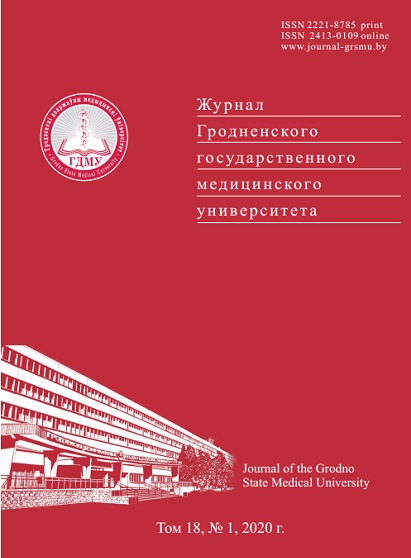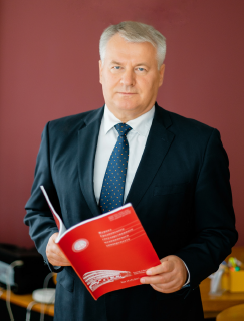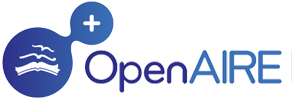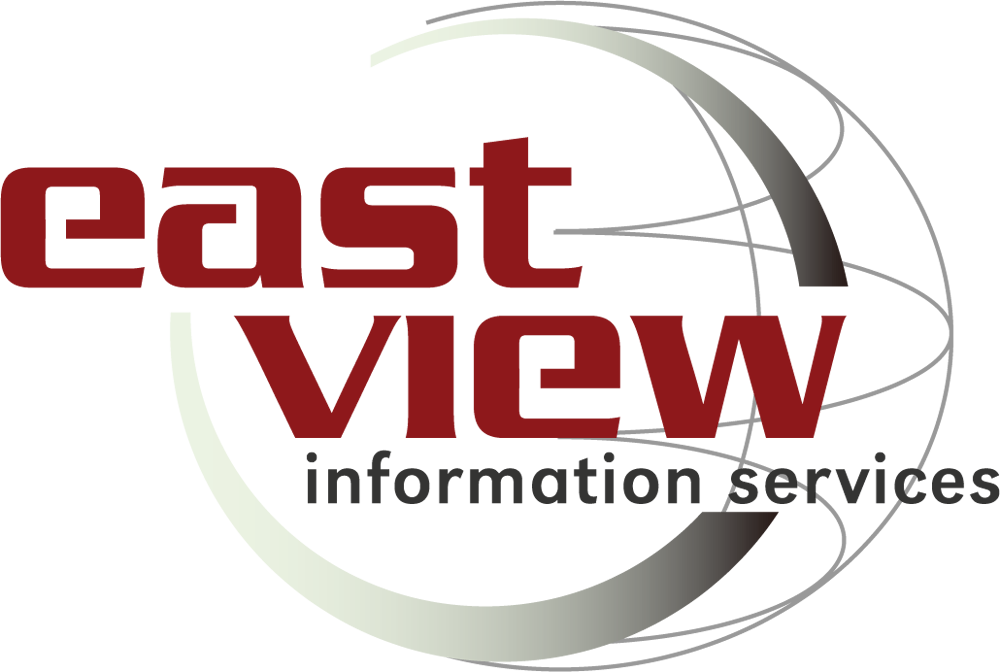СИМУЛЯЦИОННЫЕ ТЕХНОЛОГИИ В МЕДИЦИНСКОМ ОБРАЗОВАНИИ: ПЛАНИРОВАНИЕ И ПЕРСПЕКТИВЫ РАЗВИТИЯ
Аннотация
Планирование симуляционного обучения определяет его эффективность. В данном обзоре рассматриваются особенности разработки программ обучения, их адаптация для разных групп обучающихся и возможные перспективы подготовки квалифицированных специалистов в высшем учебном заведении и на этапе последипломного образования.
Литература
Pozner Ch. Medicinskaja simuljacija v SShA [Medical simulation in the United States]. Medicinskoe obrazovanie i professionalnoe razvitie. 2013;2-3:83-100. (Russian).
McGaghie WC, Issenberg SB, Petrusa ER, Scalese RJ. A critical review of simulation-based medical education research: 2003-2009. Med. Educ. 2010;44(1):50-63. http://doi.org/10.1111/j.1365-2923.2009.03547.x.
Abdulmohsen HA. Medicine and clinical skills laboratories. Journal Family & Community Medicine. 2007;14(2):59-63.
Cannon-Diehl MR. Simulation in healthcare and nursing: state of the science. Crit Care Nurs Q. 2009;32(2):128-136. http://doi.org/10.1097/CNQ.0b013e3181a27e0f.
Pasquale SJ. Educational science meets simulation. Best Pract Res Clin Anaesthesiol. 2015;29(1):5-12. http://doi.org/10.1016/j.bpa.2015.02.003.
Ziv A, Erez D, Munz Y, Vardi A, Barsuk D, Levine I, Benita S, Rubin O, Berkenstadt H. The Israel Center for Medical Simulation: a paradigm for cultural change in medical education. Acad. Med. 2006;81(12):1091-1097. http://doi.org/10.1097/01.ACM.0000246756.55626.1b.
Lucas P, Vajda C, Wegscheider T. Patient death in simulation-based medical education. Int. J. Med. Educ. 2015;1:109-110. http://doi.org/10.5116/ijme.55f2.7d9b.
Motola I, Devine LA, Soo Chung H, Sullivan JI, Issenberg SB. Simulation in healthcare education: A best evidence practical guide. Med. Teach. 2013;35(10):e1511-e1530. http://doi.org/10.3109/0142159X.2013.818632.
Jones F, Passos-Neto KE, Oddone F, Braghiroli M. Simulation in Medical Education: Brief history and methodology. Principles and Practice of Clinical Research. 2015;2(1):56-63. http://doi.org/10.21801/ppcrj.2015.12.8.
Robertson JM, Bradley D. Simulation Clinical Scenario Design Workshop for Practicing Clinicians. MedEdPortal. 2010;13:1-7. http://doi.org/10.15766/mep_2374-8265.10645.
Abdulmohsen HA. Simulation-based medical teaching and learning. J Family Community Med. 2010;17(1):35-40. http://doi.org/10.4103/1319-1683.68787.
Akaike M, Fukutomi M, Nagamune M, Fujimoto A, Tsuji A, Ishida K, Iwata T. Simulation-based medical education in clinical skills laboratory. J. Med. Invest. 2012;59(1-2):28-35. http://doi.org/10.2152/jmi.59.28.
Lateef F. Simulation-based learning: Just like the real thing. J. Emerg. Trauma Shock. 2010;3(4):348-352. http://doi.org/10.4103/0974-2700.70743.
Bulatov SA. Palmova LYU. Metodika “Standartizirovannyj pacient” kak etap formirovaniya klinicheskogo myshleniya u budushchih vrachej [“Standardized patient” methodology as the stage of forming clinical thinking in the future doctors]. Vestnik sovremennoj klinicheskoj mediciny [The Bulletin of Contemporary Clinical Medicine]. 2009;2(4):33-36. (Russian).
Doshchanov DH, Mendaliev N. Rol standartizirovannogo pacienta v ocenke kommunikativnoj kompetentnosti. Vestnik Kazahskogo Nacionalnogo medicinskogo universiteta. 2015;3:327-328. (Russian).
Guiton G, Hodgson CS, Delandshere G, Wilkerson L. Communication skills in standardized-patient assessment of final-year medical students: a psychometric study. Adv. Health Sci. Educ. 2004;9(3):179-187. http://doi.org/10.1023/B:AHSE.0000038174.87790.7b.
Bambini D. Writing a Simulation Scenario: A Step-ByStep Guide. AACN Adv. Crit. Care. 2016;27(1):259-260. http://doi.org/10.4037/aacnacc2016986.
Dworetzky BA, Peyre S, Bubrick EJ, Milligan TA, Yule SJ, Doucette H, Pozner CN. Interprofessional simulation to improve safety in the epilepsy monitoring unit. Epilepsy Behav. 2015;45:229-233. http://doi.org/10.1016/j.yebeh.2015.01.018.
Issenberg SB, Chung HS, Devine LA. Patient safety training simulations based on competency criteria of the Accreditation Council for Graduate Medical Education. Mount Sinai Journal of Medicine. 2011;78(6):842-853. http://doi.org/10.1002/msj.20301.
Datta R, Upadhyay KK, Jaideep CN. Simulation and its role in medical education. Med. J. Armed Forces India. 2012;68(2):167-172. http://doi.org/10.1016/S0377-1237(12)60040-9.
Eddy K, Jordan Z, Stephenson M. Health professionals’ experience of teamwork education in acute hospital settings: a systematic review of qualitative literature. JBI Database System Rev Implement Rep. 2016;14(4):96-137. http://doi.org/10.11124/JBISRIR-2016-1843.
Nikolic S, Mocnik M, Bevc S. Hybrid Simulation Experience-Hybrid Simulator Model vs. Manikin in Bladder Catheterization Procedure: A Pilot Study. J. Health Edu. Res. Dev. 2017;5(4):1-6. http://doi.org/10.4172/2380-5439.1000235.
Lamé G, Dixon-Woods M. Using clinical simulation to study how to improve quality and safety in healthcare. BMJ. Simulation and Technology Enhanced Learning. 2018:1-8. http://doi.org/10.1136/bmjstel-2018-000370.
Aggarwal R, Mytton OT, Derbrew M, Hananel D, Heydenburg M, Issenberg B, MacAulay C, Mancini ME, Morimoto T, Soper N, Ziv A, Reznick R. Training and simulation for patient safety. Qual. Saf. Health Care. 2010;19(Suppl 2):34-43. http://doi.org/10.1136/qshc.2009.038562.
Wilson RD. Design, Implementation and Evaluation of a Nursing Simulation: A Design and Development Research Study. Journal of Applied Instructional Design. 2012;2(1):57-68.
Bae J, Lee J, Jang Y, Lee Y. Development of simulation education debriefing protocol with faculty guide for enhancement clinical reasoning. BMC Med. Educ. 2019;19(1):Art.197. http://doi.org/10.1186/s12909-019-1633-8.
Rodriguez CE, Shah RJ, Smith C, Gay CJ, Alvarado J, Rappaport D, Adamas-Rappaport WJ, Amini R. Students Teaching Students: A Novel Solution for Teaching Procedures via Instruction on the Corpse. J. Adv. Med. Educ. Prof. 2019;7(2):51-55.
Cook DA, Hatala R, Brydges R, Zendejas B, Szostek JH, Wang AT, Erwin PJ, Hamstra SJ. Technology-enhanced simulation for health professions education: a systematic review and meta-analysis. JAMA. 2011;306(9):978-988. http://doi.org/10.1001/jama.2011.1234.
Wilson S, Vorvick L. Dyspnea in a Hospitalized Patient: Using Simulation to Introduce Interprofessional Collaborative Practice Concepts. MedEdPortal. 2016;12:1-10. http://doi.org/10.15766/mep_2374-8265.10488.
Bradley P. The history of simulation in medical education and possible future directions. Medical education. 2006;40(3):254-262.
Lambert DR, Lurie SJ, Lyness JM, Ward DS. Standardizing and personalizing science in medical education. Acad Med. 2010;85(2):356-362.
Walsh K. The future of simulation in medical education. J. Biomed. Res. 2015;29(3):259-260. http://doi.org/10.7555/JBR.29.20140138.
Mueller PS. Teaching and Assessing Professionalism in Medical Learners and Practicing Physicians. Rambam. Maimonides Med. J. 2015;6(2):1-13. http://doi.org/10.5041/RMMJ.10195.
Watmough SD, O’Sullivan H, Taylor DC. Graduates from a reformed undergraduate medical curriculum based on Tomorrow’s Doctors evaluate the effectiveness of their curriculum 6 years after graduation through interviews. BMC Med. Educ. 2010;10:Art.65. http://doi.org/10.1186/1472-6920-10-65.
Willhaus J. Simulation Basics: How to Conduct a HighFidelity Simulation. AACN Adv. Crit. Care. 2016;27(1):71-77. http://doi.org/10.4037/aacnacc2016569.





























